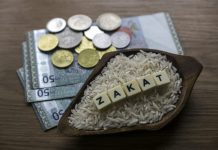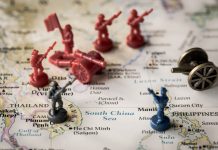By Li Jianwei and Ramses Amer
Since mid-2016, positive improvements have been made in the South China Sea region. However, more efforts are needed to sustain such peaceful and co-operative trend.
2016 was a dramatic year in the development of the South China Sea disputes. Before 12 July when the award was issued relating to the South China Sea (SCS) Arbitration Case unilaterally initiated by the Philippines’ previous administration against China, tension had been increasing and prediction was high that the Case could be an event triggering further damage of regional security or even lead to military confrontation. However what happened afterwards proved to be the opposite. The relevant parties have exercised restraint and efforts have been made towards functional co-operation.
Background Briefing
Asia is the most vibrant region in global economy and China is considered the engine, expected to contribute over 30% of world annual economic growth rate up till 2020.1 At the same time maritime disputes exist from the Sea of Japan in the north down to the marginal seas in Southeast Asia. Conflicts which might be sparkled by the sensitive issue of territorial disputes have haunted the region. The SCS disputes are most complicated in regard to parties involved and nature of disputes.
Since 2009, two divergent trends co-exist and have developed in parallel in the SCS region. On the one hand, tension and danger of conflicts has been increasing due to various moves from claimants to consolidate their maritime interests. On the other hand, attempts have been made to create mechanisms at bilateral and regional levels to not only manage the tension and reduce mistrust but also to build confidence and promote functional co-operation. The highlighted event was the Arbitration case, which had brought the relations between China and the Philippines to the lowest and the risk was that negative impacts could spill over in the region. Furthermore, with external powers like the US and its allies involved, big power rivalry further complicated the regional security situation. The concerns were that the disputes might reduce the economic vitality of the Asian countries, the Southeast Asian countries in particular.
Economic relations between China and ASEAN countries have kept on growing, seemingly not affected by the existence of maritime disputes. Trade has been increasing steadily (see Table 1 and Figure 1), with a peak in 2014 of 480.12 billion USD, 2.3 times of that in 2009. Bilateral trade between China and the Southeast Asian claimants in the SCS has also been expanding during the same period, which indicates that tensions relating to maritime disputes have not impacted negatively on overall bilateral economic relations. However it can be noted that the year-on-year growth rate fluctuates in some cases, which may imply that bilateral economic interaction could be influenced at certain specific time when relations deteriorate due to maritime disputes, e.g. in the case of China-Philippines. Another possible impact of maritime disputes is on bilateral tourism. The number of tourists to the Philippines from China dropped by 7.4% on the year-on-year basis in 2014, one year after the Philippines initiated the Arbitration case, an obvious decline from a growth rate of 69.9% in 2013.2
Developments After the Arbitration
After the Arbitration case, the dominant trend in the SCS region is towards co-operation. Efforts at both regional and bilateral levels increased aiming at promoting dispute management and functional co-operation.
At the regional level, on 25 July 2016 the Foreign Ministers of ten ASEAN States and China met in Laos, committing to “the full and effective implementation of the Declaration on the Conduct of Parties in the South China Sea (DOC)” and to achieve the early adoption of a Code of Conduct in the South China Sea (COC). Their Joint Statement emphasised the resolution of the SCS disputes through friendly consultations and negotiations by countries directly concerned and that parties were to explore or undertake co-operative activities in areas of navigation safety, search and rescue, marine scientific research, environmental protection, and combatting transnational crimes at sea. In August the 13th Senior Officials’ Meeting for the implementation of the DOC (SOM) and the 18th Joint Working Group (JWG) meeting were held concurrently in China at which two outcome documents were adopted, i.e. Guidelines for Hotline Communications among Senior Officials of the Ministers of Foreign Affairs of ASEAN Member States and China in Response to Maritime Emergencies at Sea and Joint Statement on the Application of the Code for Unplanned Encounters at Sea in the South China Sea and they were approved at the 19th China-ASEAN Summit in September 2016. In May 2017 at the 14th SOM and 21th JWG Meeting the COC framework was adopted which lay a solid foundation for the next stage of consultation on the final COC. On 6 August the framework was formally adopted at the China-ASEAN foreign ministerial meeting in Manila.
At the bilateral level, top leaders of Vietnam (September 2016, January and May 2017), the Philippines (October 2016 and May 2017) and Malaysia (November 2016 and May 2017) visited China. At the meetings between leaders of China and the three main SCS claimants emphasis were put on managing the SCS issues and expanding cooperation areas. For example, the China-Malaysia Joint Press Release stressed the importance of “incremental engagement and close rapport” of defence establishments of both countries and welcomed the signing of the “Framework of Cooperation on Joint Development and Construction of the Littoral Mission Ship for the Royal Malaysian Navy (RMN)”.3 What China and the Philippines have done to mend their relations have positive impacts on not only their SCS relations but also to a significant extent on consolidating the co-operative trend in the SCS region.
China-Philippine Efforts to Manage Their Sea Issues
Since President Rodrigo Duterte took office in June 2016, China and the Philippines have taken pragmatic policies in handling their SCS issues. Duterte intentionally shelved the Arbitration and both countries are committed to address their territorial and jurisdictional disputes by peaceful means through friendly consultations and negotiations.
Efforts of confidence-building have been carried out at different levels. During Duterte’s milestone visit to China last October, top leaders from both countries affirmed that contentious issues are not the whole picture of the China-Philippines relationship and agreed to continue discussions on confidence-building measures to increase mutual trust and confidence. In May 2017 President Xi held telephone communication with Duterte pointing out the importance of “continuously deepening political mutual trust and comprehensively carrying out cooperation in various fields” and later in the same month both leaders met again in Beijing at China’s Belt & Road Forum and exchanged views on issues of mutual concern.
To implement the agreements listed in the October 2016 Joint Statement, exchanges of visits followed between different ministries from both countries. The Philippine Finance Minister headed a delegation to China in January 2017 and then his Chinese counterpart visited the Philippines in March. Chinese Vice Premier Wang Yang visited the Philippines in March to attend the opening ceremony of the China-ASEAN Tourist Cooperation Year.
Confidence-building on the SCS issues is one of the main priorities in China-Philippine relations. The 20th Philippines-China Foreign Ministry Consultations (FMC) was held in Manila on 18 January 2017. Both sides reaffirmed their commitment to uphold peace and stability in the SCS and agreed to establish a bilateral consultation mechanism. On 19 May, the first meeting of the China-Philippines Bilateral Consultation Mechanism on the South China Sea (BCM) was held in China. Regular meetings will be arranged to discuss current and other issues of concern relating to the SCS and to explore areas of co-operation.
Bilateral interactions in two new areas have positive impact on bilateral relations. One is between coast guards of both countries. In October 2016, a memorandum of understanding (MOU) was signed on the establishment of a joint coast guard committee on maritime co-operation, which signified that bilateral co-operation on maritime affairs was underway. On 15-16 December, the first organisational meeting was held in Manila to discuss the formation of a Joint Coast Guard Committee on Maritime Cooperation. On 20-22 February 2017, the Second Organizational Meeting and Inaugural Meeting of the Joint Coast Guard Committee (JCGC) took place in Subic Bay. The JCGC adopted the Implementing Guidelines of the MOU and the Terms of Reference (TOR) of the Working Groups. It was intended to promote co-operation in the sectors of preventing and combatting drug trafficking and other transnational crimes, search and rescue (SAR), environment protection and emergency response through, among other modalities, information exchange and pragmatic empowerment activities unique for coast guards and enforcement agencies. In May, officers from the Philippine Coast Guards participated in a training course organised by China Maritime Police Academy for capacity building and promotion of understanding.
The other is between the two defence forces. On 1 May 2017 two Chinese warships and one support vessel docked in Davao City. Duterte boarded a Chinese naval ship during its stay. It was the first visit by Chinese warships to the Philippines in the past seven years, and for the first time a Philippine president boarded a Chinese naval ship.
Mechanisms were also explored and identified to encourage cooperation on marine resource development. After Duterte’s visit to China in October 2016 and by some tacit arrangements the Filipino fishermen were back fishing in the sea area near the Scarborough Shoal where a bilateral standoff occurred in 2012. China also offered financial and technical assistance to Filipino fishermen in Masinloc to enable them to initiate near-shore fish farming along the coast. Another important step forward in promoting bilateral functional co-operation at sea is that both sides have agreed to restart negotiation on joint development of oil and gas in the SCS. This was announced during Chinese Foreign Minister Wang Yi’s visit to Manila in July 2017.
Future Prospects
The claimant States are the key actors in shaping the future developments of the SCS disputes. There is no doubt that China should play an important, if not vital, role in maintaining the current peaceful and co-operative trend in the SCS region. Since the Arbitration case, pro-active interaction between China and ASEAN as well as between China and other claimant countries, in particular China and the Philippines have created a favourable environment for the SCS claimants to manage their disputes. The spill-over impact, if sustained, is conducive to enhancing peace and co-operation in the region.
However, factors exist which may disturb the positive developments. Maritime disputes have not been resolved, which may turn into a trigger leading to confrontation again. Actions by any claimant to consolidate its own interests, such as the unilateral action in an area of overlapping claims, could negatively impact on the situation. This makes it an urgent need to effectively constrain activities of claimant countries. The framework of the COC has laid a good foundation, but to make it effective will be a challenge to the ASEAN countries and to China.
Featured Image: Philippines President Rodrigo Duterte, right, receives a hat from captain Hu Jie of the Chinese navy’s missile destroyer Changchun during the ship’s goodwill visit in Davao city, Philippines. May 2017 © Yu Wei/Xinhua via AP
About the Authors
 Li Jianwei is Director of Research Center for Maritime, National Institute for the South China Sea Studies, China (lijianwei@nanhai.org.cn). Her research interests include a) legal perspectives and state practice in maritime dispute resolution and b) Illegal, Unregulated and Unreported (IUU) fishing issue in the South China Sea.
Li Jianwei is Director of Research Center for Maritime, National Institute for the South China Sea Studies, China (lijianwei@nanhai.org.cn). Her research interests include a) legal perspectives and state practice in maritime dispute resolution and b) Illegal, Unregulated and Unreported (IUU) fishing issue in the South China Sea.
 Ramses Amer is Associate Professor and PhD in Peace and Conflict Research, Associated Fellow, Institute for Security & Development Policy, Sweden (ramsesamer@gmail.com). His major areas of research include a) security issues and conflict resolution in Southeast Asia and the wider Pacific Asia and b) the role of the United Nations in the international system.
Ramses Amer is Associate Professor and PhD in Peace and Conflict Research, Associated Fellow, Institute for Security & Development Policy, Sweden (ramsesamer@gmail.com). His major areas of research include a) security issues and conflict resolution in Southeast Asia and the wider Pacific Asia and b) the role of the United Nations in the international system.
References
1. “In what aspects China influence world economy? [in Chinese]”,www.chinairn.com/news/20160823/16455678.shtml, viewed on 31 July 2017.
2. Sources are from statistics of the Ministry of Tourism of the People’s Republic of China, www.cnta.gov.cn/ and the website of ASEAN Secretary, www.aseanstats.org/publication/tourism-dashboard/?portfolioCats=58.
3. The Joint Press Release, www.kln.gov.my/web/guest/press-release/-/asset_publisher/FCk0/content/joint-press-statement?redirect=%2Fweb%2Fguest%2Fpress-release, viewed on 1 August 2017.






































































